Most Popular
Korean History
-
1
2014 ferry disaster left scars that never healed
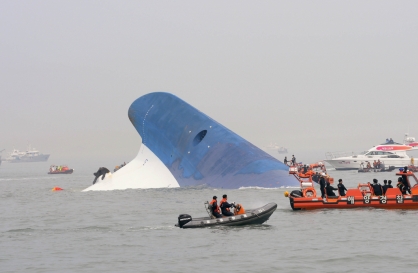
-
2
In 2012, K-pop makes leap from 'Gangnam' to the world

-
3
Deadly sinking of Navy ship in 2010 marks worst postwar military disaster
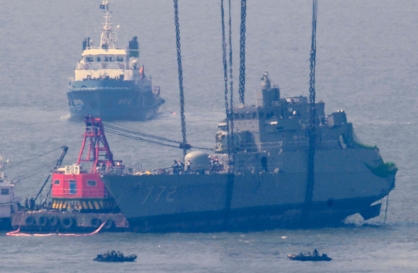
-
4
In 2008, Korea's National Treasure No. 1 went down in flames
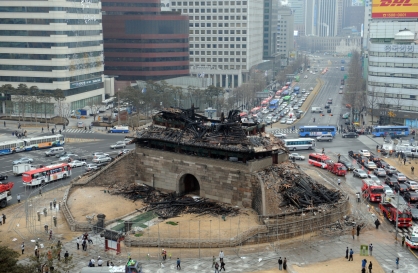
-
5
In 2005, science world’s biggest scandal unravels in Seoul

[Korean History] 2014 ferry disaster left scars that never healed
Sewol ferry sinking that killed 304, including 250 teenagers on school trip, traumatized nation for years
By Kim So-hyunPublished : Dec. 29, 2023 - 13:54
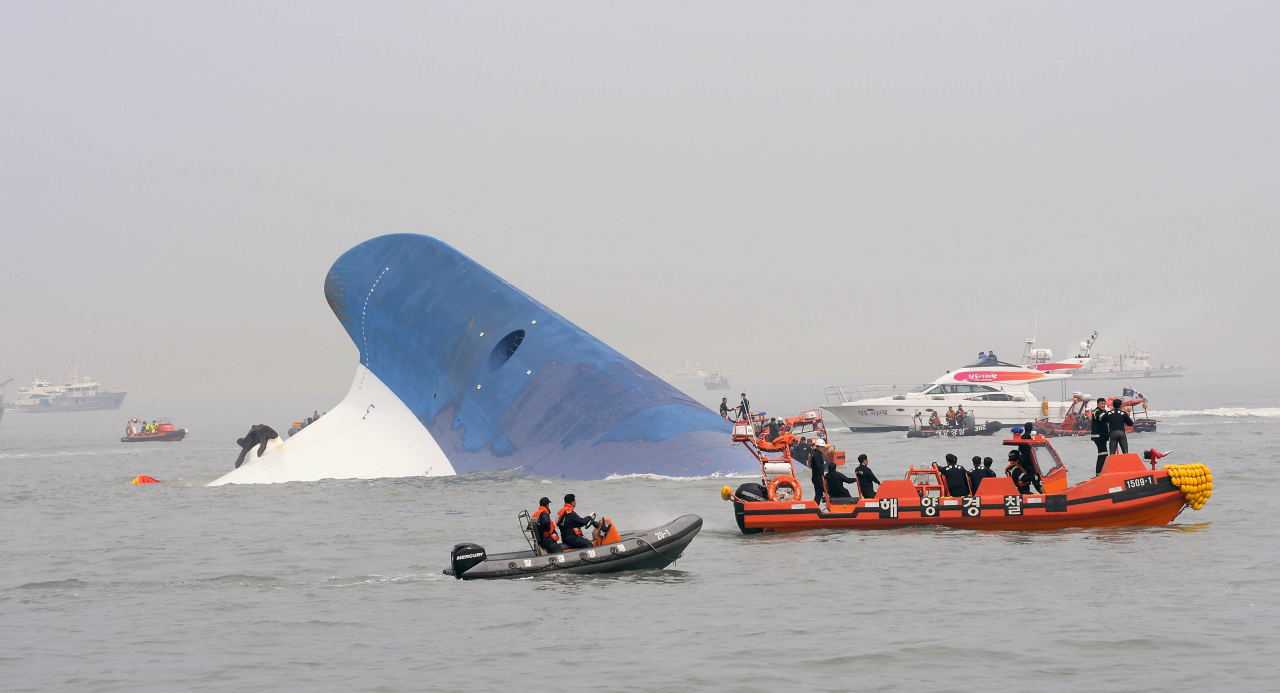
South Korea has lived through a series of disasters and tragedies, but the sinking of the Sewol ferry with the loss of over 300 passengers and crew nearly 10 years ago left a lasting mark on Korea's collective psyche.
The failure to save hundreds of people trapped in the slowly sinking ship, shown live on TV, and learning that it was another humanmade disaster caused by corruption, incompetence and a chronic insensitivity to safety enraged and saddened South Koreans to the point of what felt like a mass depression that lasted for years.
At around 8:50 a.m. on April 16, 2014, the Sewol ferry, en route from Incheon to Jeju, capsized off the southwestern island of Jindo, South Jeolla Province, after making rapid turns in the Maenggol Channel, which is known for its strong currents.
Among the passengers was Yu Ga-young and her classmates from Danwon High School in Ansan, Gyeonggi Province.
“Everyone was at the cafeteria that morning, and suddenly we realized that the plates and desks were tilted,” Yu wrote in her book of essays published early this year.
“Before getting on to the helicopter, I think looked back at my friends. I wonder how they would look at me, did they resent me for leaving first.”
Over 250 students from Danwon High were on board, but only 75, including Yu, survived.
In the first book written by a survivor of the Sewol, Yu wrote that she still visits the sea in her nightmares, and suffers from post-traumatic stress disorder. She has struggled with depression, insomnia, self-harm and spent time in a closed ward in a psychiatric hospital. Yu loved books and had dreamed of becoming a librarian, but after the Sewol, she could not read a word.
How it happened
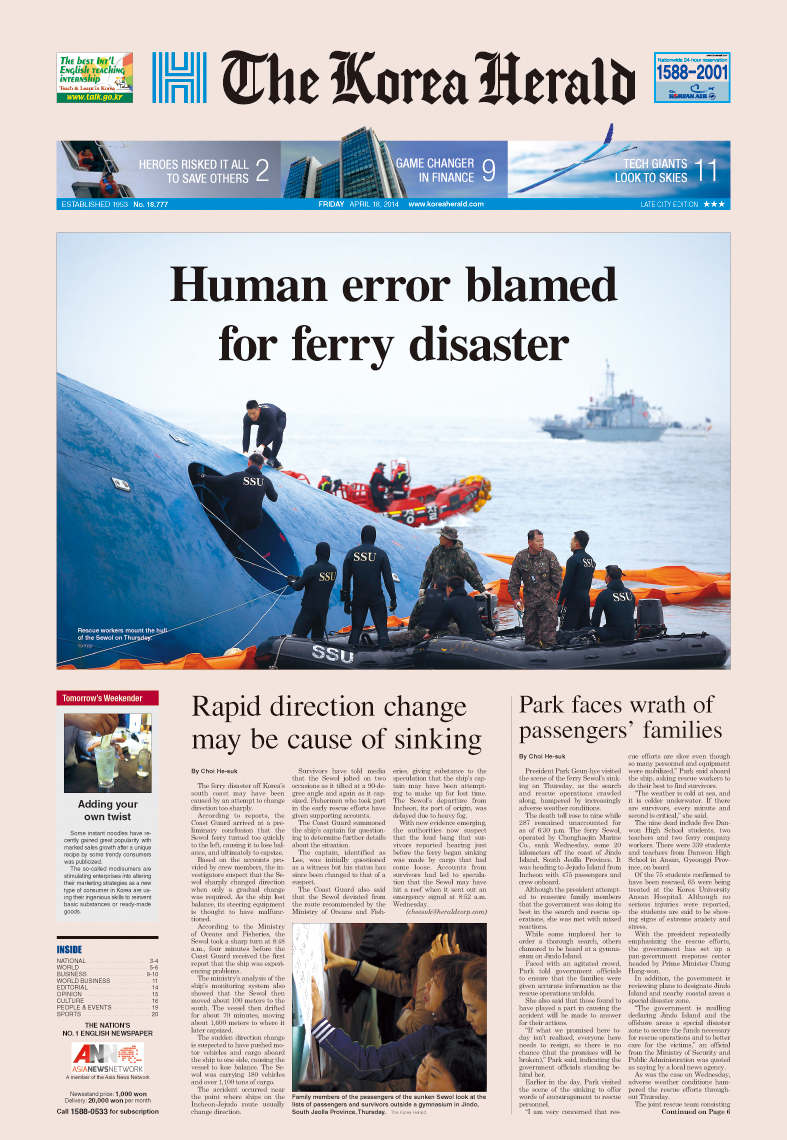
The Sewol ferry was originally called “Naminoue.” Built in Japan in 1994, the passenger vessel had navigated to remote islands between Kagoshima and Okinawa for 18 years before it was bought by Korea’s Chonghaejin Marine in 2012.
The ship underwent six months of modifications to add two more decks of passenger space and expand the cargo space as its new owner wanted it to be more profitable. This increased the gross tonnage of the Sewol by 239 tons to 6,825 tons, and altered the ship’s center of gravity. Chonghaejin also increased the ship’s passenger capacity by 117 people to a total of 921.
The ferry began service between Incheon and Jeju in March 2013.
When the Sewol set sail from Incheon on the evening before the sinking, it was recorded that it had 150 vehicles and 657 tons of freight on board, but in fact 180 vehicles and 1,157 tons of cargo had been loaded onto it, which was twice the legal limit. The excess weight and unsecured cargo contributed to the destabilization of the vessel.
Having departed 2 1/2 hours after its scheduled time due to heavy fog that kept many vessels from leaving the port, it deviated from its intended course, possibly to save time.
The poorly balanced ferry made multiple turns as it navigated through the Maengol Channel. After getting out of the waterway, it made a sharp turn against a strong current. The shoddily secured cars, trucks and shipping containers slid to the left, and the vessel tipped.
The first distress call, made by one of the passengers, was received at 8:52 a.m. Three minutes later, the ship's crew notified the Vessel Traffic Service center in Jeju that the ship was in the process of sinking. In their communication with the nearest VTS center in Jindo at 9:17 a.m., they reported that the ship had tilted to an angle exceeding 50 degrees.
At first, the media falsely reported that all the 476 people on board had been rescued. It turned out, however, that the passengers were repeatedly told over the intercom to stay in their cabins while the captain and crew members jumped ship, and the Korea Coast Guard lost precious time before starting rescue, citing the fast currents. According to news reports, more than half of the 172 survivors were rescued by fishing boats and other commercial vessels, instead of the Coast Guard.
Videos filmed and KakaoTalk messages sent by the passengers, mostly the students, and released by the media showed their last moments in which some of them said, “Mom and dad, I love you.”
A joint investigation by the police and the prosecution later concluded that the Sewol sank due to overloading of cargo, renovations that made the ferry dangerously top-heavy, and the helmsman’s steering error.
Public anger and criticism mounted against the crew that told the passengers to stay put even as they evacuated; the ship owner that recklessly expanded the vessel’s passenger and cargo spaces and overloaded it; the corrupt regulators that turned a blind eye to all this; the Coast Guard and eventually against then-President Park Geun-hye for staying in her bedroom for seven hours after she was initially briefed on the ferry accident that morning.
Aftermath
Nine official investigations and inquiries have been conducted over the Sewol ferry sinking, and more than 150 regulators, crew members, ship inspectors and officials from ferry and loading companies have been arrested and indicted for their wrongdoings that led to the disaster. South Korea implemented stricter safety regulations and enacted laws to combat corruption and hold companies accountable for prioritizing profits over safety.
In November 2015, the Supreme Court upheld a lower court ruling that sentenced the captain, Lee Joon-seok, to life imprisonment for murder as he abandoned the ship where hundreds of passengers were trapped in. Fourteen other crew members were sentenced to up to 12 years in jail.
Kim Kyeong-il, captain of the Coast Guard patrol boat No. 123 which arrived at the scene first but failed to order the passengers to leave the ferry, was sentenced to three years in prison for involuntary manslaughter due to professional negligence. He was the only member of the Coast Guard found guilty over the ferry disaster. In early November this year, the top court acquitted the leadership of the Coast Guard including its former chief Kim Seok-kyun and nine other top officers of involuntary manslaughter due to professional negligence.
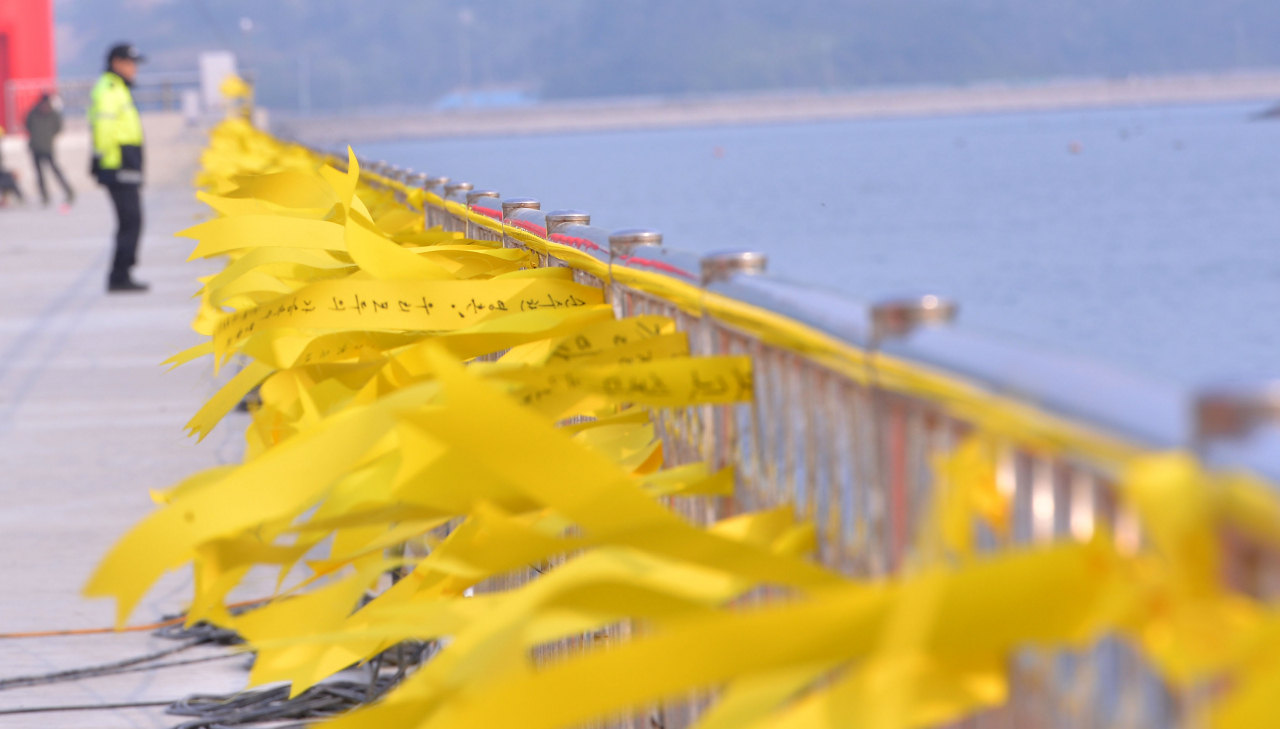
The sunken ferry was pulled out of the waters in March 2017 following lengthy delays due to technological and cost issues. The remains of four missing passengers were found as it was raised. The wreck of Sewol has since been placed on the dock of the southwestern port of Mokpo.
Then-President Park Geun-hye was heavily criticized for refusing to clarify what she was up to during the seven hours she was out of the public eye. The media reported various speculations that her office denied, but did not explain further. The Sewol victims’ families and their supporters including opposition politicians organized massive protests that eventually led up to Park’s impeachment in 2017.
“The Park administration failed to empathize with the anguish of the bereaved families,” Yeom Jae-ho, former president of Korea University and president of Taejae University, wrote in his recent column.
“The opposition party and its mainstream faction composed of student activist-turned politicians, on the other hand, saw through their rage and pains of the younger generation to capitalize on their anger."
In her memoir series carried by a local media company since October this year, Park said that because of her lack of response to the suspicions, “what is not factual was taken as facts, leading to divisions and disruptions in Korean society.”
She, however, admitted that she checked the initial report on the ferry accident only belatedly, and that a hairdresser had visited her official residence during that time.
South Korea still has a long way to go to recover from the wounds of the Sewol, and the survivors are trying.
Yu, the survivor, wrote her book of essays as part of the activities of a nonprofit organization called “Wounded Healer,” which she founded with her friends in 2018 to connect with other traumatized survivors. Her group has sought to console and support others who have been hurt, through therapeutic puppetry for children and volunteer work to help the elderly who lost their homes to forest fires.
“I thank people who treated me without prejudice and people who reached out to me unconditionally,” Yu said, adding that it was their support that gave her the courage to write the book so that the Sewol ferry disaster would not be forgotten.
This article is the final installment of the "History through The Korea Herald" series, which has revisited significant events and issues over seven decades through articles, photos and editorial pieces published in The Korea Herald. The full series is available online at www.koreaherald.com. -- Ed.
























![[Today’s K-pop] Treasure to publish magazine for debut anniversary](http://res.heraldm.com/phpwas/restmb_idxmake.php?idx=642&simg=/content/image/2024/07/26/20240726050551_0.jpg&u=)